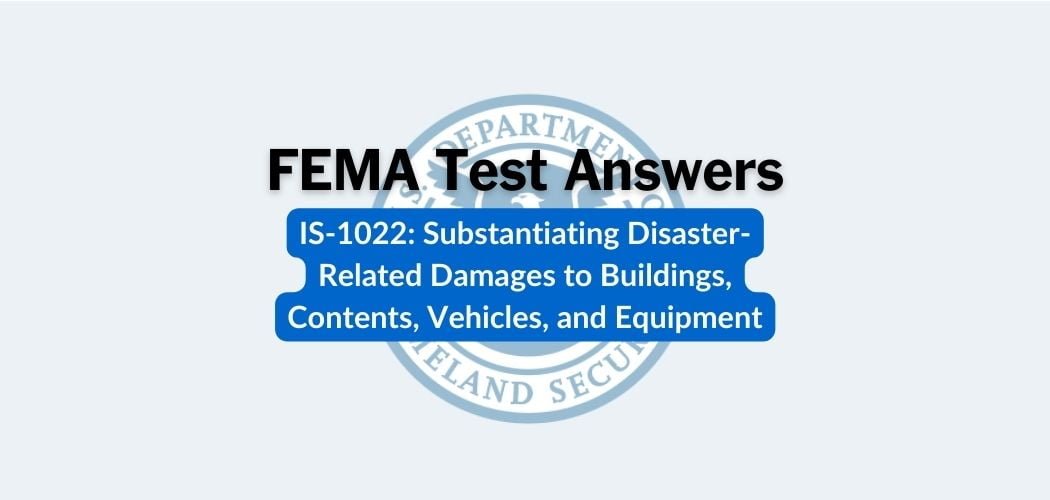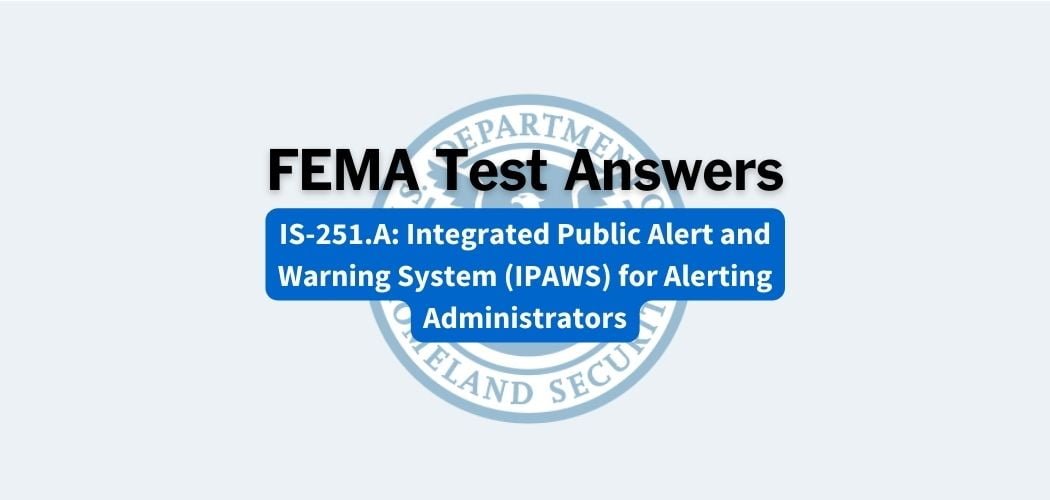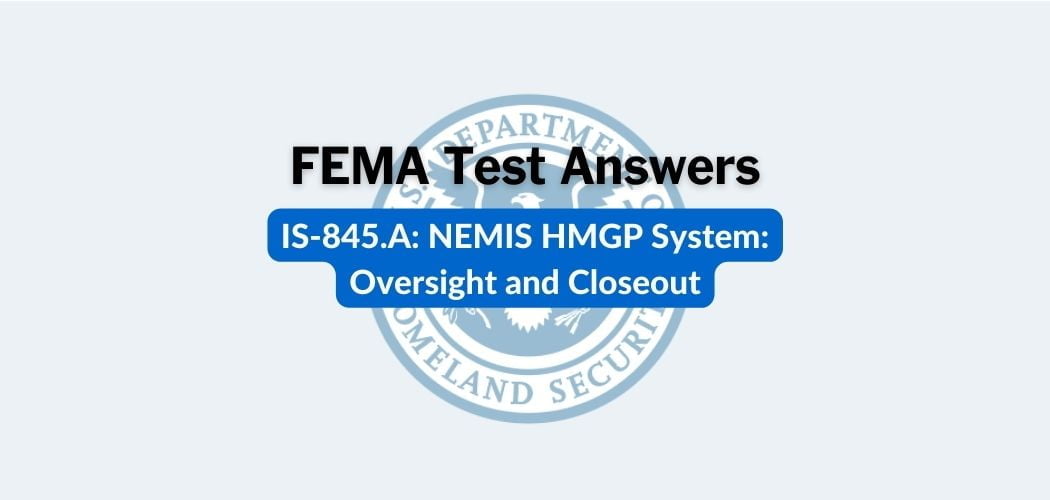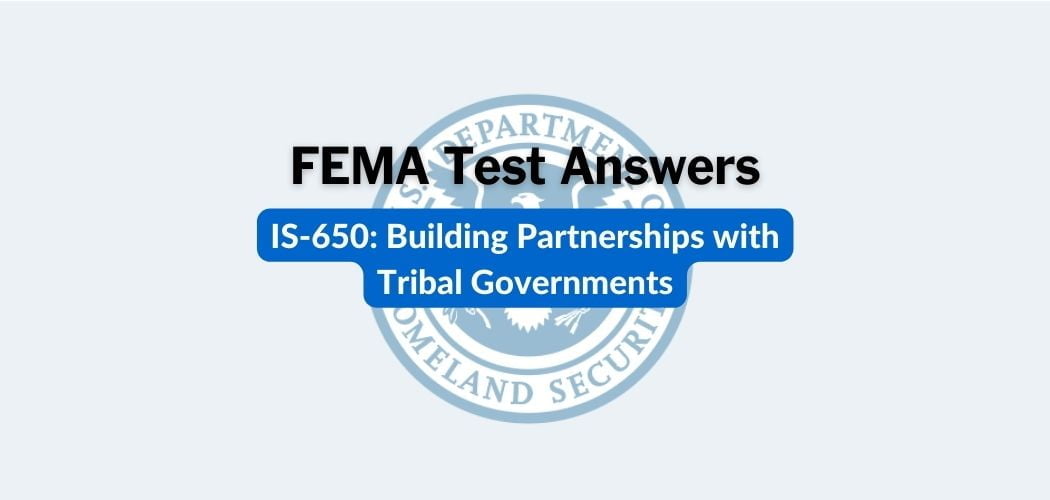Overview: The FEMA IS-2901 course was published on 10/6/2020 to provide an overview of the seven (7) Community Lifelines, including how they promote the importance of situational awareness, prioritization of response efforts, and decision-making processes during disaster response to work toward incident stabilization.
FEMA IS-2901 test answers
Each time this test is loaded, you will receive a unique set of questions and answers. The test questions are scrambled to protect the integrity of the exam.
Question 1. Incident stabilization happens either by re-establishment of services or through a temporary _______ solution.
A. Recovery
B. Response✅
C. Mitigation
D. Preparedness
Question 2. Through Community Lifelines, incident information is reframed and operationalized to:
A. Support mitigation efforts
B. Rapidly determine the scale and complexity of a disaster
C. Guide recovery operations to support and facilitate integration across mission areas✅
D. Develop preparedness strategies
Question 3. A major flood has struck a rural town, compromising the town’s Water Infrastructure component of the Food, Water, Shelter Lifeline. Water infrastructure has been restored. What is the appropriate status condition?
A. Yellow
B. Red✅
C. Green
D. Blue
Question 4. The ______ identified FEMA’s need to create a more structured prioritization and response concept.
A. The 2017 Hurricane Season After-Action Report✅
B. The National Response Framework (4th Edition)
C. The Incident Stabilization Guide
D. The National Preparedness System
Question 5. When developing an effective situation report using the lifelines construct, it is critical to:
A. Articulate the condition of each lifeline and ongoing efforts✅
B. Exactly replicate the FEMA SLB template
C. Include “Tier 3” visualization in order to validate the information reported
D. Include pictures to validate the information reported
Question 6. Through the Community Lifelines, incident information is reframed and operationalized to:
A. Tell states and territories what priorities they will be working on
B. Guide response operations to support and facilitate the integration across mission areas✅
C. Create a command and control organization for an incident
D. Develop operational strategies that focus on preparedness efforts
Question 7. A major flood has struck a rural town, compromising the town’s Water Infrastructure component of the Food, Water, Shelter Lifeline. A bottled water mission has been identified and resourced, but transportation issues are restricting its delivery. What is the appropriate status condition?
A. Yellow
B. Red✅
C. Green
D. Blue
Question 8. Emergency Managers must prioritize the re-establishment of ______, even in the absence of fully functioning infrastructure:
A. Fuel
B. Power
C. State/Local Collaboration
D. Critical Lifeline Services✅
Question 9. The Safety and Security Lifeline includes:
A. Law enforcement and shelter
B. Law enforcement and water treatment
C. Law enforcement and government services
D. HAZMAT cleanup and power restoration✅
Question 10. A major flood has struck a rural town, compromising the town’s Water Infrastructure component of the Food, Water, Shelter Lifeline. The community’s drinking water is believed to be compromised and contaminated by flood waters. No response solution or timeline has been identified to restore the water service. What is the appropriate status condition?
A. Yellow✅
B. Red
C. Green
D. Blue
Question 11. Planning for the delivery of each LOE allows the development of strategy across all required _______ to mobilize, employ, and demobilize resources
A. Infrastructure Plans
B. Systemic Integrations
C. Emergency Support Functions✅
D. Local Service Providers
Question 12. What is an example of a contingency response solution?
A. Long-term dam safety enhancement program✅
B. Using temporary power to support critical infrastructure
C. Repair of a critical transformer station
D. Volunteers delivering hot meals
Question 13. Which example best describes a stabilization target for the Communications Lifeline?
A. Communication services are able to support survivors’ alerts, warnings, and other messages to the public✅
B. Fifty percent (50%) of cell towers in the area are operational and the private sector continues to conduct repairs
C. Restore emergency medical transportation services to provide hospital transport
D. Seventy percent (70%) of fuel production services are restored
Question 14. The Community Lifelines construct provides an outcome-driven approach that promotes situational awareness, prioritization of response efforts, and _______ to stabilize an incident.
A. Information Sharing
B. Decision-making Processes✅
C. Communications
D. Common Operational Picture
Question 15. A major flood struck a rural area. As a result, hundreds of survivors require rescue. Which standardized LOE should Emergency Managers develop strategies for to achieve stabilization?
A. HAZMAT cleanup
B. Public Health and Medical Services
C. Fatality Management
D. Search and Rescue✅
Question 16. These describe the general-level services that comprise a Community Lifeline:
A. Components
B. Sub-components
C. Lines of Effort✅
D. Core Capabilities
Question 17. For operations planning to be as useful as possible, decision-makers must understand how current and planned interagency actions will impact:
A. Lifeline stabilization✅
B. Fuel consumption
C. Workforce requirements
D. Logistics sequencing
Question 18. The Incident Management team should _______ evaluate the performance and effectiveness of each LOE.
A. Never
B. Continuously
C. Occasionally✅
D. Possibly
Question 19. The _________ is organized around Community Lifelines and provides an overview of the current emergency management situation:
A. State Coordinating Officer Report
B. Federal Coordinating Officer Report
C. Daily Operations Briefing✅
D. Weekly Response Brief
Question 20. Lifelines provide responders an outcomes-based approach through situational awareness, ______, and support with planning/operational decision-making.
A. Communications
B. Common Terminology
C. Tactical Guidance
D. Status Reporting✅



